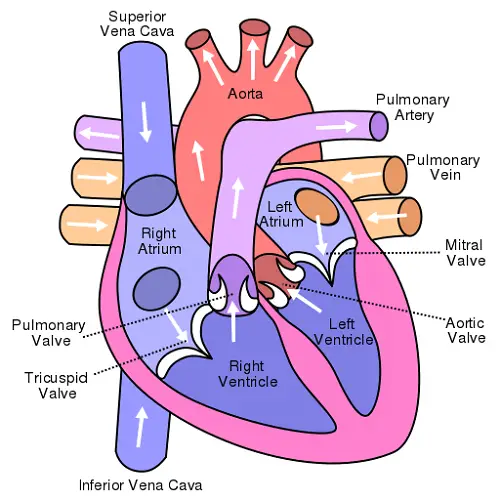Why is the left ventricle thicker than the right?
Heart is the most important organ of the human body. It lies in the thoracic cavity. It is divided into four chambers, two atria and two ventricles. Upper left chamber is called as the left atrium; lower left chamber is the left ventricle. Upper right chamber is called right atrium and lower right chamber is the right ventricle. Atria receive blood, whereas ventricles pump blood to the body.
To understand the importance of atria and ventricles we need to understand the circulation of blood in our body. Oxygenated blood (pure blood) is pumped from the lungs to the left atrium, from the left atrium blood is pumped to the left ventricle through the mitral valves (leaflets between the two chambers which prevent back flow of blood). From the left ventricle, blood flows to other parts of the body via aorta (main blood vessel carrying blood from heart). This is called as systemic circulation.
Now after all the delivered oxygen is used up by the body tissues, the deoxygenated blood travels from the entire body from the venous (veins) system to the right atrium. From the right atrium, it is pumped to the right ventricle through the tricuspid valves, and from the right ventricle blood is ejected to the lungs for purifying or oxygenation. This is called as pulmonary circulation.
The chambers of the heart wall of both the left and right ventricle consist of three layers. Cardiac muscle does not fatigue unlike other muscles of the body due to these 3 layers. Cardiac muscle cannot be repaired if it is damaged.
Atria are thin walled because they transport blood to adjacently placed ventricles, i.e. at a very short distance. Ventricles have thick muscular walls because they pump blood over great distances. Even though the right ventricle and the left ventricle act as two separate pumps that parellely eject equal volumes of blood, the right ventricle has a lesser workload. The right ventricle pumps blood into the lungs (pulmonary circulation) which are nearby and present very little resistance to blood flow. In contrast, the left ventricle pumps blood to the rest of the body organs where the resistance to blood flow is very significant. The left ventricle works more than the right ventricle to maintain the same blood flow. Also, the pressure within the left ventricle is much more than the right ventricle. This difference in workload affects the structure of the ventricular walls and thus the muscular wall of left ventricle is much thicker than the right ventricle owing to the drastic increase in workload per pumping. The amount of workload is directly proportional to the thickness of the walls of ventricles.
Summary:
Right ventricle is the chamber which pumps blood to the lungs and has lesser workload and pressure, whereas left ventricle pumps blood to the organs of the body which are distant and hence, has a higher workload to overcome resistance to maintain blood flow. Therefore, always left ventricle is much thicker than the right ventricle.











Leave a Reply